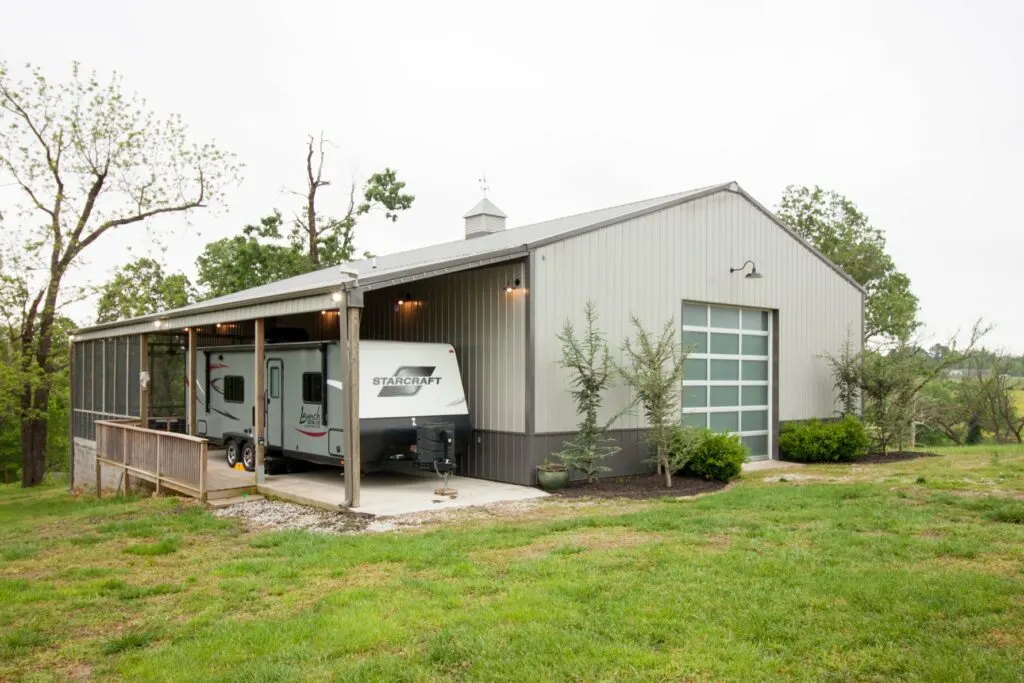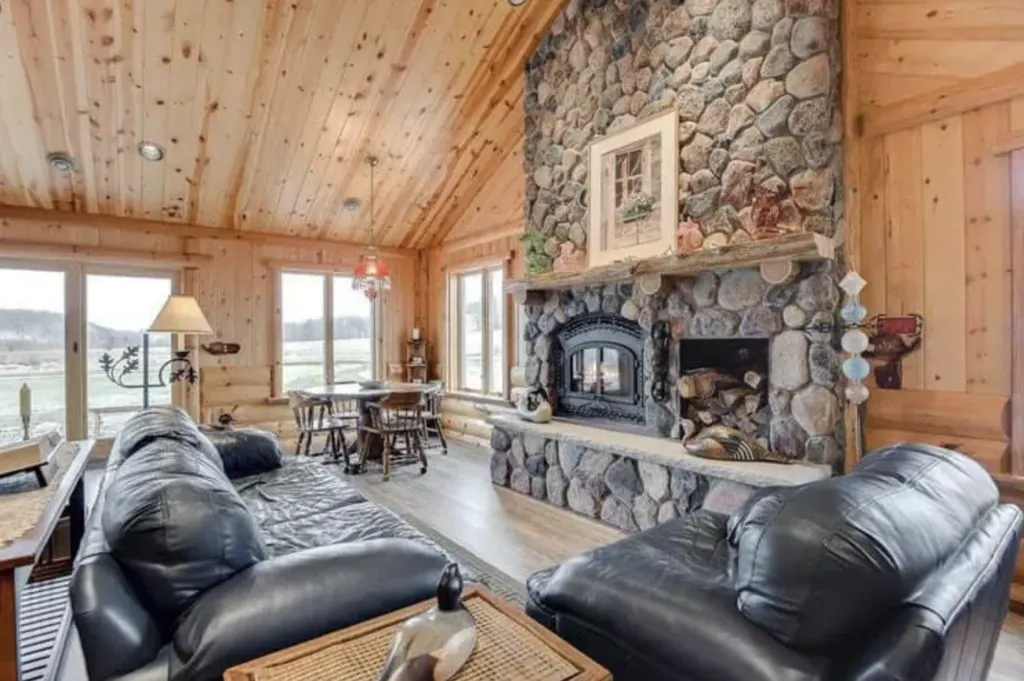In a world where the clock seems to tick a little faster each day, the allure of having a space that combines work and living is more enticing than ever.
The average daily commute in the United States has escalated to a record 27.6 minutes, making the thought of reclaiming those precious minutes a tantalizing prospect.
Imagine stepping from your workspace to your living space in seconds – that’s the magic of shouse living.
You might be wondering, what exactly is a shouse? Well, let’s unravel the concept in this guide. A shouse is where convenience meets creativity, where the division between work and life blurs in favor of seamless living.
It’s the solution that lets you wave goodbye to the daily commute and embrace a lifestyle where your home is your office and vice versa.
So, whether you’re yearning for a more efficient work-life balance or just intrigued by the idea of combining your living space with your workspace, buckle up as we explore the world of shouses.

Page Contents
What is the Shouse Definition?
The term “shouse” is a blend of two words: shop and house, occasionally called “shop house.” At its core, it is a unique concept that combines a personal workshop and/or storage space with a dwelling.
Typically found on lands used for recreational activities like fishing or hunting, a shouse goes beyond the conventional notion of a garage. Shouse designs cater to the needs of professionals like mechanics and construction workers who seek an efficient and accessible workspace adjoining their residence.
Nowadays, shouses are not limited to recreational pursuits. They’ve evolved into functional workspaces that enable individuals to conduct business from the comfort of their homes. It’s not merely a space to park vehicles but a versatile area that accommodates work and living under one roof.
Unlike traditional houses with small garages, shouses boast larger, customizable garages or workshops that extend the boundaries of possibility.
While shouses and barndominiums share a workshop element, shouses emphasize the workshop area’s functionality, accommodating various trades and creative endeavors.
What is the Shouse Origin?
The origins of the shouse concept are diverse and stretch back through history. In the Middle Ages, combining a place of work with a living space first took root. These early incarnations paved the way for the shouses we see today.
The Midwest witnessed the resurgence of the shouse concept in recent decades, offering a modern twist on this ancient practice.
Throughout history, workshops have been integral to production, providing both the tools and the space needed for manufacturing and repairs. The Industrial Revolution further cemented the workshop’s role, with workshops initially serving as the primary production sites before the advent of large-scale factories.
In the 20th and 21st centuries, home workshops became commonplace, often found in garages, basements, or standalone sheds. These spaces were hubs for practical repairs and creative experimentation, equipped with hand tools, power tools, and hardware.
Asia also embraced the fusion of work and home in the form of shophouses. These structures, popular from the 19th to the early 20th century, were a common sight and have become iconic examples of Southeast Asian architecture.
Similar integrated work and living spaces can be found in regions like Latin America and the Caribbean, reflecting their universal appeal.

What are the Typical Shouse Features?
Several defining features create a harmonious blend of work and living space.
Shouses often boast open-concept layouts seamlessly transitioning between the workshop and residential areas. High ceilings and generous windows characterize the architecture, flooding the space with abundant natural light and creating an airy atmosphere that promotes productivity and comfort.
The workshop, a central feature of shouses, is meticulously designed to accommodate specific trades and activities.
Customizable layouts, ample storage, and strategically placed equipment ensure the workspace is optimized for efficiency. Oversized garage doors facilitate easy movement of tools, materials, and vehicles in and out of the workshop.
Living quarters within shouses maintain a balance between comfort and practicality. Thoughtful design ensures the living area integrates seamlessly with the overall layout, creating a cohesive flow between work and relaxation. Modern amenities, stylish finishes, and functional furniture harmonize to offer a well-rounded living experience.
Outdoor spaces surrounding shouses may include additional storage, recreational areas, and landscaping that complements the property’s dual-purpose nature. This integration of indoor and outdoor spaces contributes to the shouse’s distinctive charm.
What is the Average Shouse Price?
The cost of a shouse can vary significantly based on factors such as location, size, materials, and desired amenities.
While shouses are not as common as traditional homes, they share cost similarities with barndominiums. A shouse cost breakdown is reminiscent of barndominiums, presenting an affordable alternative for those seeking a dual-purpose living and workspace.
When calculating costs, it’s important to distinguish between the workshop area and the living quarters.
A workshop may not have the same furnishings as other house sections, such as ductwork, flooring, or countertops. While the residential living space might come at a cost ranging from $80 to $140 per square foot, the workshop area might cost around $25 to $40 per square foot. The workshop section tends to have lower costs per square foot, reflecting its practical nature.
In contrast, the living space costs can vary based on design preferences and materials. Shouse interiors can range from modern and contemporary aesthetics to classic rustic barn styles.
It’s important to take into account other factors including the dimensions, obtaining building permits, and labor expenses, in order to determine the overall cost of the entire home.
Shouse kits are also a popular option for simplifying the construction process. These kits often include a metal frame with steel posts, utilizing post-frame construction. With a wide array of design options and features available, shouse kits offer customization while streamlining the building process.
What are the Shouse Benefits?
The allure of shouses lies in their multifunctionality, offering benefits that cater to modern lifestyles. Integrating a workshop and living space under one roof eliminates the need for a daily commute, saving time and reducing stress.
This proximity allows for a seamless transition between work and personal life, promoting a healthier work-life balance.
The ample workshop space enables individuals to pursue hobbies, crafts, and even professional endeavors from home. For tradespeople, mechanics, artists, and entrepreneurs, shouses provide the convenience of a dedicated workspace just steps away from the living quarters.
Furthermore, shouses offer cost-efficient options for homeowners who value practicality without compromising comfort. The versatile design of shouses can be tailored to individual needs, allowing for personalized configurations that accommodate various trades, creative projects, and lifestyle preferences.
Wrapping Up
When it comes to innovative living, shouses shine as a captivating and versatile concept that seamlessly integrates work and home life.
From their historical origins to their contemporary applications, shouses represent a journey through time and evolution, highlighting the universal nature of the human need to merge practicality with comfort.
If the allure of shouse living has captivated your imagination, there’s a wealth of guides, inspirations, and ideas awaiting you at Barndominium Life. From practical advice to imaginative designs, Barndominium Life is your compass to navigate the exciting world of barn-style living.
Explore the possibilities of barndominiums and chart your course toward a lifestyle tailored to your needs.
If you would like more guides like this one, check out the rest of BarndominiumLife.com. There, you will find more helpful tips and tricks from the pros. You will also find featured barndominiums, barndominium floor plans, and information on financing and insurance. Knowing as much as you can will help you get the best results for your dream home.
Noah Edis is a passionate staff writer at Barndominium Life, a leading online resource for all things barndominium. With years of experience in the writing industry, Noah has made a name for himself as a skilled storyteller and a knowledgeable authority on the topic of barndominiums.
Noah’s interest in barndominiums began when he stumbled upon the concept while researching alternative housing options. Intrigued by the rustic charm and functionality of these converted barns, he soon became obsessed with the idea of living in one himself. He spent countless hours researching the construction, design, and decorating aspects of barndominiums, and soon became an expert on the topic.
As a staff writer at Barndominium Life, Noah enjoys sharing his knowledge and passion for these unique homes with others. He has written numerous articles covering a wide range of topics, from the history of barndominiums to the best ways to decorate them. Noah’s writing is informative, engaging, and always on-trend, making him a valuable asset to the Barndominium Life team.
Noah is a graduate of the University of British Columbia, where he earned a degree in English Language and Literature. When he’s not writing about barndominiums, he can be found exploring the great outdoors, trying new restaurants, or spending time with his family and friends. Noah is dedicated to his craft and is always striving to improve his writing skills and knowledge of the barndominium lifestyle.
Connect with Noah on LinkedIn
